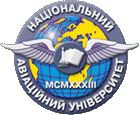LANGUAGE PERSONALITY IN EPISTOLARY DISCOURSE: TYPOLOGY OF THE LINGUOINDIVIDUATIONS AND LINGUOINDIVIDUALIZATIONS
DOI:
https://doi.org/10.18372/2520-6818.33.10769Keywords:
language personality, linguoindividuation, linguoindividualization, communicative strategy, communicative tactics, phatic function, etiquette functionAbstract
In the article on the material of 265 letters by Yuri Shevelyov addressed to Oleksa Izarsky, author determined the basic communicative strategies and communicative tactics, among which as the most loaded arise: communicative strategies of naturalness expressiveness, dialogue activation, intertextuality that correlate with phatic, conative, etiquette and cognitive functions. For epistolary-discursive practice by Yuri Shevelyov the determining factor is communicative tact and a respectful attitude towards recipient. Communicative strategies and tactics are the derivatives of linguoindividuations and linguoindividualizations. The studied epistolary-discursive practice refers to internal linguoindividuations with maximum space of linguoindividualizations that correlate with linguosocial, linguoterritorial, linguocorporative, linguocultural portraits of Yuri Shevelyov. The language individualizations of Yuri Shevelyov in linguistic and social dimension are easily readable and recognizable, as they reveal his intellectual and creative potential with the highest distinction of his own SELF through self-characteristic and evaluation of others with whom he is in the creative and / or corporate contacts. The linguoterritorial language individualizations of Yuri Shevelyov are related to directions of his territorial displacement (Germany, Sweden, United States, Canada, Ukraine), and a reflection of the realities of the territory concerned, matching its outstanding locations with others similar, and also communicative tactics of the dialogue intensification through the use of language-area features. Ligvocorporative language individualizations in the epistolary-discursive practices are confined to active and / or passive environment in which he is activated as a language personality that motivates consideration of the creative characteristics of each with whom he is in contact. Epistolary is full of not just mention of any names (about 800 in general text tissue), but it is rich by open assessments, comparisons, guidelines to improve the submitted material, its Гуманітарна освіта в технічних вищих навчальних закладах. № 33, Київ, 2016 71linguistic completion, etc. The latter is the most consistently traceable during his editorial activity: there are paintings of proofreading and reference of some articles authors to relevant sources, and more. There are significantly changing linguoindividualizations of Yuri Shevelyov during his active faculty practice, when as crucial there appear linguistic interests, constant load of certain linguomodels – phonological, morphological, and others. Linguocultural language individualizations in the epistolary-discursive practice of Yuriy Shevelyov cover several iconic planes that correlate with the prominent scholar hobbies: painting, theater, cinema, architecture, literature, etc. In 200 letters among 265 analyzed there were reflected the alleged sender preferences realized in an extensive qualifying and evaluative commentaries, comparisons of architectural and stylistic preferences of the Poles and the Germans, the Swedes and the French, and more. And all this is represented and polished in the choice language individualizations with elaborately played up lexical and phraseological russianisms, usage of dialect formulas and constructions, usage of elements of friendly banter, extended use of language game, etc. The whole range of linguoindividualizations of Yuriy Shevelyov studied in 265 letters to Oleksa Izarsky is associated with corresponding communicative strategies of tact, naturalness, intensification of dialogue, and others. For sender phatic and etiquette functions combine so naturally, that within 265 used forms of address, only one third belongs to repeated. The analyzed epistolary-discursive practice of Yuriy Shevelyov belongs to those in which lack of the recipient reactions in most cases does not affect the semantic clarity, and from planes of conative and cognitive functions one can often understand the reactions of the recipient, reproduce their load and value for the addressee. Yuri Shevelev does not use communicative tactics of silence – he is open in relationships, openly evaluates these or those facts and events. In the modern study of the creative heritage of Yuriy Shevelyov the relevant task is to elaborate a holistic Experimental Research Corpus of Texts of established principles and directions of navigation that will allow the use of his developments in forming of the finished State Code of the Ukrainian language.
References
Акишина А.А. Этикет русского письма / А.А. Акишина, Н.И. Формановская. – 4-е изд. – М.: Изд-во Русский язык, 1989. ‒ 192 с.
Бахтин М.М. Проблема речевых жанров / Михаил Михайлович Бахтин. Собр. соч. – М.: Русские словари, 1996. – Т. 5: Работы 1940 ‒ 1960 гг. – С. 159 ‒ 206.
Белунова Н.И. Комфорт речевого общения (Дружеское письмо): Эпистолярное наследие творческой интеллигенции // Н.И. Белунова // Русский язык в школе. – 1996. ‒ № 5. ‒ С. 80 ‒ 84.
Буркитбаева Г.Г. Некоторые вопросы теории жанра в современной зарубежной лингвистике / Г.Г. Буркитбаева // Вопросы когнитивной лингвистики. ‒ 2005. ‒ №2. ‒ С. 97 ‒ 105.
Вайсгербер Й.Л. Родной язык и формирование духа / Пер. с нем., вступ. ст. и коммент. О.А. Радченко. – Изд. 2-е, испр. и доп. [текст] / Йохан Лео Вайсгербер. – М.: Едиториал УРСС, 2004. – 232 с.
Гайда С. Жанры разговорных высказываний / Станислав Гайда // Жанры речи. – Вып.2. Саратов, 1999. – С. 103 ‒ 111.

